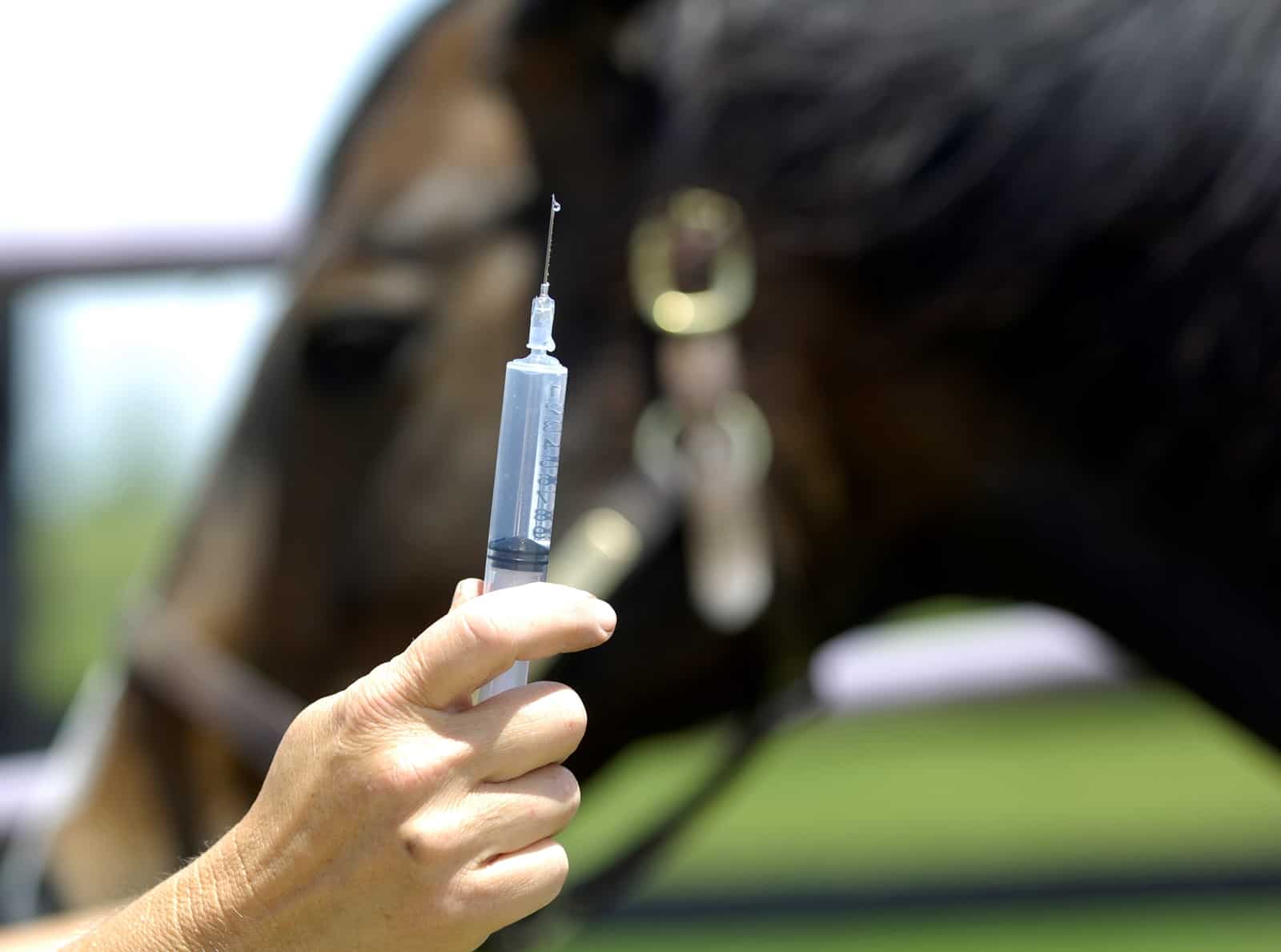What We Know (and Don’t Know) About Bisphosphonates

In humans, physicians use bisphosphonates to prevent loss of bone mass associated with osteoporosis. Among equine practitioners, however, “the use of bisphosphonates seems to be controversial, with many having strong opinions for or against the use of these drugs in equines,” said Duesterdieck- Zellmer. “Questions remain regarding the best choice of bisphosphonate, frequency, route and dose of administration, minimum age of the horse to be treated, what type of conditions may benefit from treatment, and how to select the best candidates from successful bisphosphonate treatment.”
The Pharmacokinetics
Veterinarians can administer bisphosphonates either intravenously (IV) or intramuscularly (IM). Once in the body, the drug binds to bone mineral, particularly at sites of active bone resorption.
“Here, bisphosphonates remain until being liberated via slowed bony resorption,” said Duesterdieck-Zellmer. This means the drug’s half-life (in the case of bisphosphonates, the time it takes for the drugs’ bone concentration to decrease by 50%) depends on the rate of bone turnover, which varies by location and disease state present. There’s currently no data available about bisphosphonates’ half-life in horses
Create a free account with TheHorse.com to view this content.
TheHorse.com is home to thousands of free articles about horse health care. In order to access some of our exclusive free content, you must be signed into TheHorse.com.
Start your free account today!
Already have an account?
and continue reading.

Written by:
Alexandra Beckstett
Related Articles
Stay on top of the most recent Horse Health news with















